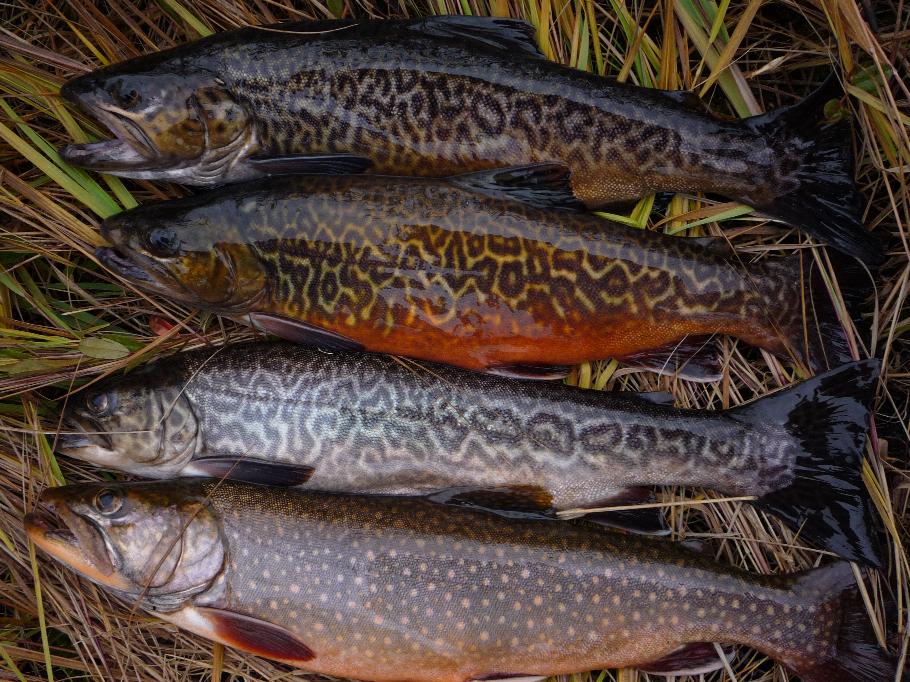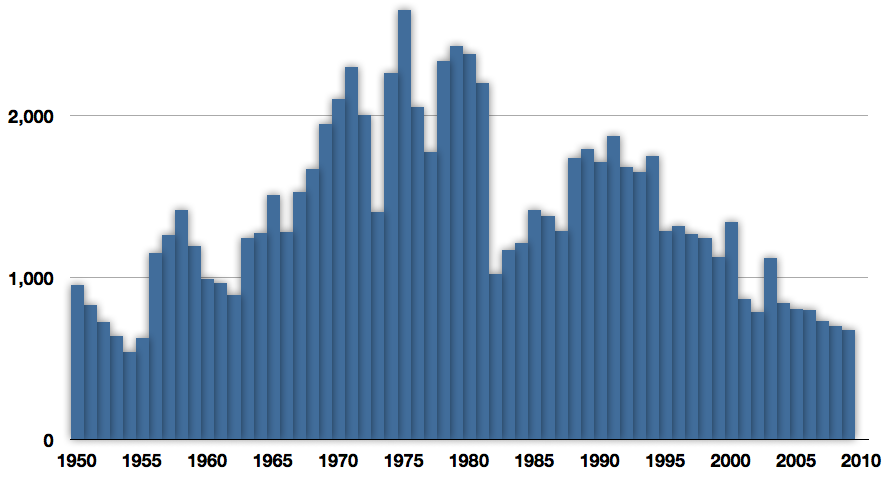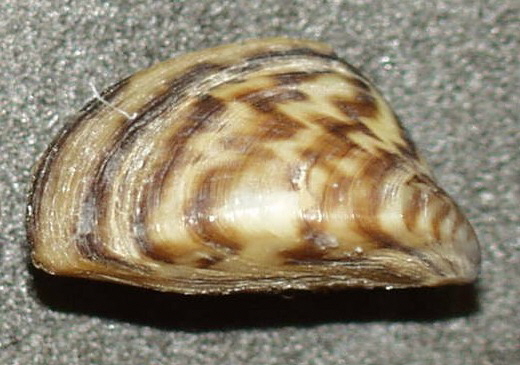|
Elliptio Complanata
The eastern elliptio (''Elliptio complanata'') is a freshwater mussel in the Unionidae family, native to Canada and the United States. It is a bivalve member of the phylum Mollusca. Not only is it found in Canada and the United States, but it is frequently the most abundant species of mussel found in its home waterways. It is the most common mussel in the Delaware River and the most common mussel found in the state of New Hampshire and Vermont. It can be found in the substrate at the bottom of lakes, ponds and rivers. Size is variable, but can reach up to in length. Reproduction The eastern elliptio reproduces sexually via spawning from third week of April to second week of June. Life cycle Like most Unionidae, ''Elliptio complanata'' begins as an egg within the gills of the female elliptio, matures into a glochidium, attaches itself to a host fish species and then becomes a juvenile mussel. ''Elliptio complanata'' is known to attach to several fish species including Ame ... [...More Info...] [...Related Items...] OR: [Wikipedia] [Google] [Baidu] |
John Lightfoot (biologist)
The Reverend John Lightfoot (9 December 1735 – 20 February 1788) was an English parson-naturalist, spending much of his free time as a conchologist and botanist. He was a systematic and effective curator of the private museum of Margaret Bentinck, Duchess of Portland. He is best known for his ''Flora Scotica'' which pioneered the scientific study of the plants and fungi of Scotland. He was elected a Fellow of the Royal Society for his scientific work. Life and work Lightfoot was born in Newent, Gloucestershire. His father Stephen Lightfoot was a yeoman farmer.Boulger, George Simonds. wikisource:Lightfoot, John (1735-1788) (DNB00), DNB, 1885–1900, Volume 33: Lightfoot, John He was educated at Pembroke College, Oxford. He gained a BA in 1756 and an MA in 1766. He was elected as a Fellow of the Royal Society in 1785. Lightfoot was Rector (ecclesiastical), Rector of Gotham, and the chaplain and librarian for Margaret Bentinck, Duchess of Portland. He was also curate of Coln ... [...More Info...] [...Related Items...] OR: [Wikipedia] [Google] [Baidu] |
Mussel
Mussel () is the common name used for members of several families of bivalve molluscs, from saltwater and Freshwater bivalve, freshwater habitats. These groups have in common a shell whose outline is elongated and asymmetrical compared with other edible clams, which are often more or less rounded or oval. The word "mussel" is frequently used to mean the bivalves of the marine family Mytilidae, most of which live on exposed shores in the intertidal zone, attached by means of their strong Byssus, byssal threads ("beard") to a firm substrate. A few species (in the genus ''Bathymodiolus'') have colonised hydrothermal vents associated with deep ocean ridges. In most marine mussels the shell is longer than it is wide, being wedge-shaped or asymmetrical. The external colour of the shell is often dark blue, blackish, or brown, while the interior is silvery and somewhat nacreous. The common name "mussel" is also used for many freshwater bivalves, including the freshwater pearl mussels. F ... [...More Info...] [...Related Items...] OR: [Wikipedia] [Google] [Baidu] |
Elliptio
''Elliptio'' is a genus of medium- to large-sized freshwater mussels, aquatic bivalve mollusks in the family Unionidae, commonly known as the unionids, freshwater mussels or naiads. In contrast with many other groups of American Unionidae, the ''Elliptio'' species reach their greatest diversity in the Atlantic-draining rivers of Georgia and the Carolinas, and large parts of Florida. One species ranges north into New England and southern Canada, and two occur in the interior Mississippi drainages. Most ''Elliptio'' species have elongated shells, with silvery or purplish interior nacre beneath a thick periostracum, and few reach large size or thickness. The genus name ''Elliptio'' refers to the elliptical shape of these bivalves. As of 2023 there are 43 species in the genus. Species The following species are recognised in the genus ''Elliptio'': *'' Elliptio ahenea'' *†'' Elliptio albertensis'' *'' Elliptio angustata'' – Carolina lance *'' Elliptio arca'' – Al ... [...More Info...] [...Related Items...] OR: [Wikipedia] [Google] [Baidu] |
Cottus Bairdii
The mottled sculpin (''Cottus bairdii'') is a species of freshwater ray-finned fish belonging to the family Cottidae, the typical sculpins. This species has a wide but scattered North American distribution. As the name suggests, its coloration is a combination of bars, spots, and speckles randomly distributed. The large pectoral fins are banded. The first dorsal fin is made of slender and somewhat soft spines, and just barely joins with the second dorsal. Maximum length is 15 cm. It feeds primarily on aquatic insect larvae, but will also eat crustaceans, small fish, fish eggs, and some plant material. In turn, the sculpin is preyed upon by other fish, notably trout. Favored habitat is well-oxygenated and clear water, such as over gravel riffles in mountain streams, springs, and along rocky lake shores. Spawning takes place during early winter and late spring. The male's head becomes darker, and he selects a protected nest site, such as under a rock or ledge. After courtshi ... [...More Info...] [...Related Items...] OR: [Wikipedia] [Google] [Baidu] |
Salvelinus Namaycush
The lake trout (''Salvelinus namaycush'') is a freshwater char living mainly in lakes in Northern North America. Other names for it include mackinaw, namaycush, lake char (or charr), touladi, togue, laker, and grey trout. In Lake Superior, it can also be variously known as siscowet, paperbelly and lean. The lake trout is prized both as a game fish and as a food fish. Those caught with dark coloration may be called ''mud hens''. Taxonomy and etymology It is the only member of the subgenus ''Cristovomer'', which is more derived than the subgenus '' Baione'' (the most basal clade of ''Salvelinus'', containing the brook trout (''S. fontinalis'') and silver trout (''S. agasizii'')) but still basal to the other members of ''Salvelinus''. The specific epithet ''namaycush'' derives from ''namekush'', a form of the word used in some inland Southern East Cree communities in referring to this species of fish. Other variations found in East Cree are ''kûkamâs ', ''kûkamâw'' and '' ... [...More Info...] [...Related Items...] OR: [Wikipedia] [Google] [Baidu] |
Salvelinus Fontinalis
The brook trout (''Salvelinus fontinalis'') is a species of freshwater fish in the char genus ''Salvelinus'' of the salmon family Salmonidae native to Eastern North America in the United States and Canada. Two ecological forms of brook trout have been recognized by the US Forest Service. One ecological form is long-lived potamodromous populations in Lake Superior known as coaster trout or coasters. The second ecological form is the short-living predaceous anadromous populations which are found in northern lakes and coastal rivers from Long Island to Hudson Bay, which are referred to as salters. In parts of its range, it is also known as the eastern brook trout, speckled trout, brook char (or charr), squaretail, brookie, or mud trout, among others. Adult coaster brook trout are capable of reaching sizes over 2'' ''feet in length and weigh up to 6.8'' ''kg (15'' ''lb), whereas adult salters average between 6 and 15'' ''inches in length and weigh between 0.5 and ... [...More Info...] [...Related Items...] OR: [Wikipedia] [Google] [Baidu] |
Anguilla Rostrata
The American eel (''Anguilla rostrata'') is a facultative catadromous eel found on the eastern coast of North America. Freshwater eels are fish belonging to the elopomorph superorder, a group of phylogenetically ancient teleosts. The American eel has a slender, supple, snake-like body that is covered with a mucus layer, which makes the eel appear to be naked and slimy despite the presence of minute scales. A long dorsal fin runs from the middle of the back and is continuous with a similar ventral fin. Pelvic fins are absent, and relatively small pectoral fins can be found near the midline, followed by the head and gill covers. Variations exist in coloration, from olive green, brown shading to greenish-yellow and light gray or white on the belly. Eels from clear water are often lighter than those from dark, tannic acid streams. The eel lives in fresh water and estuaries and only leaves these habitats to enter the Atlantic Ocean to make its spawning migration to the Sargasso Se ... [...More Info...] [...Related Items...] OR: [Wikipedia] [Google] [Baidu] |
Juvenile (organism)
A juvenile is an individual organism (especially an animal) that has not yet reached its adult form, sexual maturity or size. Juveniles can look very different from the adult form, particularly in colour, and may not fill the same niche as the adult form. In many organisms the juvenile has a different name from the adult (see List of animal names). Some organisms reach sexual maturity in a short metamorphosis, such as ecdysis in many insects and some other arthropods. For others, the transition from juvenile to fully mature is a more prolonged process—puberty in humans and other species (like higher primates and whales), for example. In such cases, juveniles during this transformation are sometimes called subadults. Many invertebrates cease development upon reaching adulthood. The stages of such invertebrates are larvae or nymphs. In vertebrates and some invertebrates (e.g. spiders), larval forms (e.g. tadpoles) are usually considered a development stage of their own, an ... [...More Info...] [...Related Items...] OR: [Wikipedia] [Google] [Baidu] |
Freshwater Mussel
Freshwater bivalves are molluscs of the order Bivalvia that inhabit freshwater ecosystems. They are one of the two main groups of freshwater molluscs, along with freshwater snails. The majority of bivalve molluscs are saltwater species that live in the marine habitats, but a number of families have evolved to live in fresh water (and in some cases, also in brackish water). These belong to two different evolutionary lineages, i.e. freshwater mussels and freshwater clams, and the two groups are not closely related. Freshwater bivalves have a simple morphology that varies among taxa, and are distributed around most regions of the world. Freshwater bivalve species vary greatly in size. Some pea clams (genus '' Pisidium'') have an adult size of only . In contrast, one of the largest species of freshwater bivalves is the swan mussel from the family Unionidae; it can grow to a length of , and usually lives in lakes or slow-flowing rivers. Freshwater pearl mussels are economical ... [...More Info...] [...Related Items...] OR: [Wikipedia] [Google] [Baidu] |
Glochidium
The glochidium (plural glochidia) is a microscopic larval stage of some freshwater mussels, aquatic bivalve mollusks in the families Unionidae and Margaritiferidae, the river mussels and European freshwater pearl mussels. These larvae are tiny and are typically between 100 and 200 micrometers, or approximately a third of the size of a grain of salt. They can be round or have hooks, attaching to the gills, fins and scales of fish (for example to the gills of a fish host species) for a period before they detach, fall to the substrate and take on the typical form of a juvenile mussel. Since a fish is active and free-swimming, this process helps distribute the mussel species to potential areas of habitat that it could not reach any other way. Before the origin of this larval form was understood, they were described as "parasitic worms" on the fish host, although under normal circumstances, glochidia do not harm fish. Overexposure or heavy infections of glochidia may however gre ... [...More Info...] [...Related Items...] OR: [Wikipedia] [Google] [Baidu] |
Vermont
Vermont () is a U.S. state, state in the New England region of the Northeastern United States. It borders Massachusetts to the south, New Hampshire to the east, New York (state), New York to the west, and the Provinces and territories of Canada, Canadian province of Quebec to the north. According to the most recent U.S. Census estimates, the state has an estimated population of 648,493, making it the List of U.S. states and territories by population, second-least populated of all U.S. states. It is the nation's List of U.S. states and territories by area, sixth smallest state in area. The state's capital of Montpelier, Vermont, Montpelier is the least populous List of capitals in the United States, U.S. state capital. No other U.S. state has a List of largest cities of U.S. states and territories by population, most populous city with fewer residents than Burlington, Vermont, Burlington. Native Americans in the United States, Native Americans have inhabited the area for abou ... [...More Info...] [...Related Items...] OR: [Wikipedia] [Google] [Baidu] |








